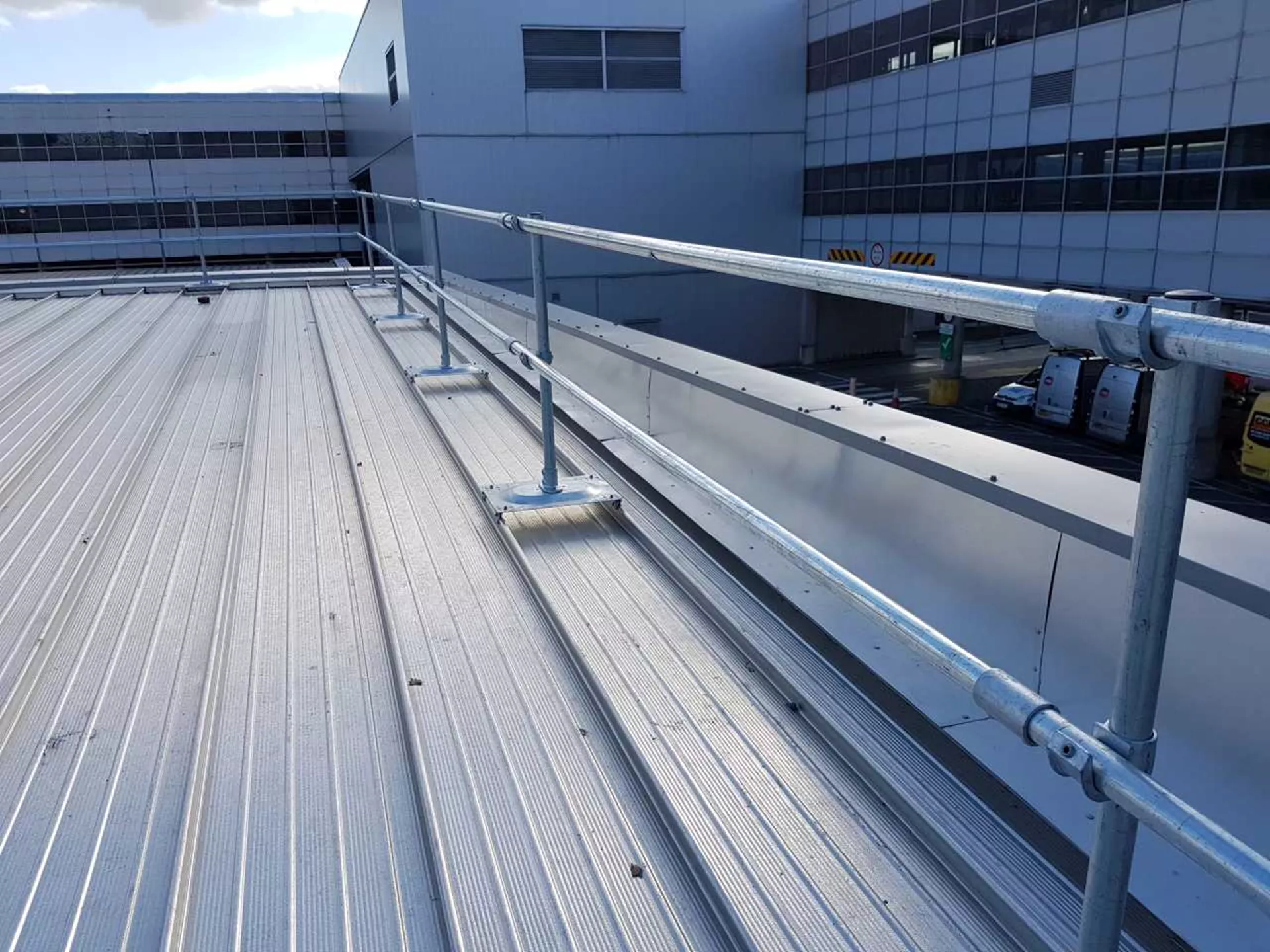

When it comes to workplace safety, especially at heights, guardrails are a vital line of defense. The Occupational Safety and Health Administration (OSHA) has established stringent requirements for guardrail systems, including specific height measurements, to protect workers from falls—the leading cause of fatalities in construction and general industry. But why does OSHA mandate these specific height requirements? Understanding the reasoning can help organizations prioritize safety while staying compliant.

OSHA mandates that guardrails must be 42 inches (plus or minus 3 inches) above the walking or working surface (29 CFR 1926.502). This standard applies to both temporary and permanent guardrail systems used in general industry and construction. Additionally, midrails must be installed at a height halfway between the top rail and the working surface to provide comprehensive protection.
These measurements, though they may seem arbitrary at first glance, are the result of meticulous research and practical considerations aimed at maximizing safety and reducing fall-related injuries (NIOSH).

The 42-inch guardrail height corresponds to the average adult's center of gravity, which is approximately 3 feet above ground level. This design prevents individuals from tipping over the rail when leaning against it, providing a stable barrier against accidental falls (NIOSH).
OSHA requires that guardrails withstand a minimum of 200 pounds of force applied in any direction. A height of 42 inches ensures the rail can handle this force effectively without risk of structural failure, accommodating the weight distribution of a person leaning, pushing, or falling against the barrier (29 CFR 1926.502). This is particularly critical during high-impact scenarios, such as slips or sudden loss of balance.
By setting a standard height, OSHA creates uniformity across industries, making it easier for workers and employers to recognize and comply with safety protocols. This consistency is particularly critical for workers who move between job sites or industries. A predictable standard reduces the risk of confusion and improper guardrail installation, ensuring universal safety (OSHA.gov).

OSHA allows a 3-inch variance (39 to 45 inches) to account for construction tolerances, site-specific challenges, and material variations. This flexibility ensures safety is maintained without imposing undue burdens on compliance. However, the lower limit (39 inches) ensures that the guardrail remains effective even under less-than-ideal conditions, such as material shrinkage or uneven surfaces (29 CFR 1926.502).
This range also allows for adaptability in different environments, such as:
Temporary Work Platforms: Adjustments may be needed for modular or movable systems.
Weather Conditions: Temperature fluctuations and material expansion or contraction may impact guardrail height.
Diverse Worker Heights: A slight range ensures that the majority of workers are adequately protected regardless of individual physical differences.

Falls often occur due to a loss of balance, tripping, or misjudging distances near edges. A properly installed 42-inch guardrail acts as an intuitive and physical barrier, reminding workers of edge proximity while providing a sturdy safeguard. This is especially crucial in high-traffic areas where distractions or fatigue may compromise awareness (NIOSH).
Workers are more productive when they feel safe. Guardrails at OSHA-approved heights give employees the confidence to perform their tasks near elevated edges without fear, reducing hesitation and increasing focus on the job at hand. Confidence in safety measures contributes to better efficiency and morale across the workforce.
Non-compliance with OSHA guardrail standards can lead to costly fines, legal disputes, and reputational damage (OSHA.gov). Meeting and exceeding height requirements demonstrates a company’s commitment to employee safety and regulatory compliance. In the long term, investing in compliant guardrail systems reduces potential expenses associated with workplace accidents and violations.

While OSHA provides a baseline, it's crucial to assess site-specific needs. Consider the following scenarios:
Sloped or Uneven Surfaces
Sloped roofs or uneven ground present unique challenges for guardrail placement. To maintain compliance, adjustments may be necessary to ensure that the top rail remains at 42 inches relative to the walking surface (29 CFR 1926.502).
Temporary Installations
Short-term projects often require temporary guardrail systems. Modular or adjustable solutions are ideal for these situations, providing flexibility without compromising compliance.
Customized Solutions
Complex worksites often benefit from tailored guardrail systems. For example Kee Guard system offers modular configurations that adapt to a wide range of environments while meeting OSHA standards. Such solutions can be designed to accommodate specific architectural or operational requirements.

California’s Division of Occupational Safety and Health (Cal/OSHA) often implements stricter safety requirements than federal OSHA standards. For guardrails, key differences include:
Cal/OSHA mandates a minimum guardrail height of 45 inches, compared to OSHA’s 42-inch standard. This increased height reflects the state’s proactive stance on preventing falls and addressing risks unique to California industries (Cal/OSHA Title 8, Section 3210).
While federal OSHA allows for a 3-inch variance, Cal/OSHA strictly enforces its height requirements, ensuring top rails and midrails remain consistent across varying conditions.
Cal/OSHA often requires enhanced guardrail systems at construction sites, including stricter inspections and higher penalties for non-compliance. This includes ensuring that all temporary systems meet permanent installation standards during their use (Cal/OSHA Title 8, Section 1620).
California’s seismic activity influences Cal/OSHA’s regulations. Guardrail systems must account for potential ground shifts or structural movement to maintain effectiveness during and after seismic events.

While adhering to OSHA’s height requirements is critical, there are additional measures companies can take to optimize safety:
Regularly inspect guardrail systems for signs of wear, damage, or improper installation. Over time, environmental factors such as corrosion, UV exposure, or heavy use can compromise the integrity of safety barriers (NIOSH).
Provide comprehensive training for employees on the importance of guardrails and the specific safety protocols at your site. Awareness and education are key to preventing accidents.

OSHA’s guardrail height requirements are more than just numbers—they are a culmination of years of research, engineering, and real-world application designed to save lives. By understanding the 'why' behind these standards, businesses can not only achieve compliance but also foster a culture of safety that protects their greatest asset: their people.
When planning your next safety initiative, trust Kee Safety’s comprehensive solutions to help you meet and exceed OSHA standards while tailoring systems to your unique needs. Our expertise ensures that every guardrail is not just a guardrail but a testament to your commitment to safety.

Contact us today to discuss how we can assist you with your rooftop fall protection needs. Our experts provide comprehensive safety audits and customized fall protection solutions tailored to your specific needs. With industry-leading expertise and a full range of innovative solutions, Kee Safety is your trusted partner in creating a safer work environment.

Please fill in your details below and we’ll be in touch shortly.